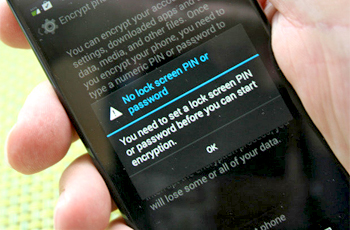London, Apr 11: Hackers can steal your PINs and passwords just from the motion of your phone when you type in the information, warn experts who have unveiled how easy it is for malicious websites and installed apps to spy on you. Cyber experts at Newcastle University in the UK have shown it is possible to crack four-digit PINs with a 70 per cent accuracy on the first guess - 100 per cent by the fifth guess - using just the data collected via the phone's numerous internal sensors.
 Despite the threat, the research shows that people are unaware of the risks and most of us have little idea what the majority of the twenty five different sensors available on current smart phones do. While all the major players in the industry are aware of the problem, no-one has yet been able to find a solution.
Despite the threat, the research shows that people are unaware of the risks and most of us have little idea what the majority of the twenty five different sensors available on current smart phones do. While all the major players in the industry are aware of the problem, no-one has yet been able to find a solution.
"Most smart phones, tablets, and other wearables are now equipped with a multitude of sensors, from the well-known GPS, camera and microphone to instruments such as the gyroscope, proximity, NFC, and rotation sensors and accelerometer," said Maryam Mehrnezhad, research fellow at Newcastle University. "But because mobile apps and websites don't need to ask permission to access most of them, malicious programmes can covertly 'listen in' on your sensor data and use it to discover a wide range of sensitive information about you such as phone call timing, physical activities and even your touch actions, PINs and passwords," said Mehrnezhad.
"More worrying, on some browsers, we found that if you open a page on your phone or tablet which hosts one of these malicious code and then open, for example, your online banking account without closing the previous tab, then they can spy on every personal detail you enter," she said. "And worse still, in some cases, unless you close them down completely, they can even spy on you when your phone is locked," she added.
"Despite the very real risks, when we asked people which sensors they were most concerned about we found a direct correlation between perceived risk and understanding," said Mehrnezhad. "So people were far more concerned about the camera and GPS than they were about the silent sensors," she said.
Sensors are now commonplace in smart devices and are largely responsible for the boom in mobile gaming and health and fitness apps, and soon in all devices in the Internet of Things (IoT), researchers said. The data provided by them combined with the growing computational ability of mobile phones and tablets has transformed the way we use them.
In total, the team identified 25 different sensors which now come as standard on most smart devices and are used to give different information about the device and its user. Only a small number of these - such as the camera and GPS - ask the user's permission to access the device. The research was published in the International Journal of Information Security.





Comments
Add new comment